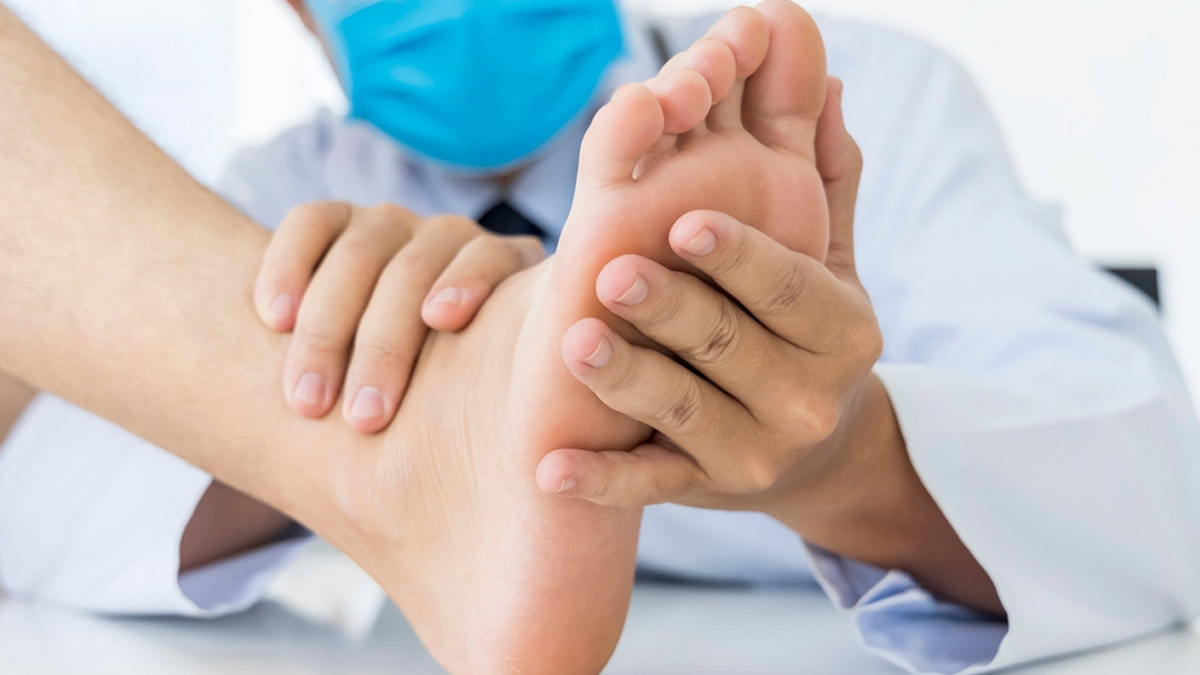
Flat feet, a condition where the arches of the feet collapse, can cause discomfort and pain. Whether it's the nagging pain after a long day on your feet or the discomfort that makes you hesitate before taking a walk, flat feet can make simple activities feel challenging. But the good news is that with a few practical strategies, you can manage the pain and discomfort that comes with flat feet. In this article, we list nine ways to alleviate pain and discomfort due to this foot condition.
Table of Content:-
Tips For Managing Pain and Discomfort For Flat Feet
1. Invest in Supportive Footwear

People with flat feet should wear shoes that provide proper support to manage their pain. You should look for footwear with arch support and cushioning. Orthopaedic shoes designed specifically for flat feet can help distribute pressure evenly and provide better alignment. Try to avoid wearing flat or unsupportive shoes, such as flip-flops or high heels, as these can exacerbate discomfort.
2. Use Orthotic Inserts
Orthotic inserts are a simple yet effective way to make walking more comfortable. These shoe inserts are designed to give your arches the support they need and ease any discomfort you might be feeling. Whether you pick up an over-the-counter pair or get custom ones made just for you, orthotics can help with foot alignment, take the pressure off your muscles, and make moving around a lot easier.
Also Read: Not Everyone With Flat Feet Experience Pain And Other Myths About Flat Feet Debunked
3. Perform Foot Exercises

Strengthening your feet and leg muscles is a great way to ease the discomfort that comes with flat feet. Simple exercises can make a big difference. For example, you can try toe curls by picking up small objects with your toes and then letting them go. Another helpful move is the arch lift—try lifting the arch of your foot while keeping your heel and toes on the ground. Stretching exercises, like calf and Achilles tendon stretches, can also help relieve tension and make your feet feel better.
4. Maintain a Healthy Weight
Did you know excess body weight puts additional stress on your feet, worsening the symptoms of flat feet? Therefore, maintaining a healthy weight through a balanced diet and regular exercise can help reduce the strain on your feet and improve overall comfort. If you’re struggling with weight management, consider speaking with a nutritionist or a fitness trainer for personalised advice and support.
5. Use Ice and Heat Therapy
Applying ice and heat to your feet can provide relief from pain and inflammation. Ice therapy is effective for reducing swelling and numbing discomfort. Apply an ice pack wrapped in a cloth to your feet for 15-20 minutes several times a day. Heat therapy, on the other hand, can help relax tense muscles and improve blood circulation. Use a warm, moist towel or heating pad on your feet for 15-20 minutes.
Also Read: Hot Vs Cold Pack: Expert Explains Which One To Use And When
6. Practice Proper Foot Care

Taking care of your feet is essential when dealing with flat feet. Keep your feet clean and dry to prevent fungal infections, and trim your toenails regularly to avoid discomfort and complications. If you experience any sores, blisters, or other issues, address them promptly to prevent worsening the problem.
7. Consider Physical Therapy
If you're struggling with significant pain or functional limitations due to flat feet, physical therapy might be beneficial. A physical therapist can work with you to develop a personalised exercise program to strengthen your feet and legs, improve your gait, and address any movement issues. They can also provide guidance on proper body mechanics to reduce strain on your feet and other parts of your body.
8. Avoid High-Impact Activities
High-impact activities, such as running or jumping, can put additional stress on your feet and exacerbate discomfort. Opt for low-impact exercises, such as swimming, cycling, or walking on soft surfaces, to stay active without placing excessive strain on your feet. If you enjoy high-impact activities, consider using supportive footwear and orthotics to minimise the impact on your feet.
9. Seek Professional Advice
If you experience persistent pain or discomfort despite following these tips, it's essential to seek professional advice. A podiatrist or orthopaedic specialist can assess your condition, provide a proper diagnosis, and recommend appropriate treatments. They may suggest options, such as physical therapy, custom orthotics, or, in some cases, surgical interventions to address severe cases of flat feet.
[Disclaimer: This article contains information for informational purposes only, hence, we advise you to consult your own professional if you are dealing with any health issues to avoid complications.]
Also watch this video
How we keep this article up to date:
We work with experts and keep a close eye on the latest in health and wellness. Whenever there is a new research or helpful information, we update our articles with accurate and useful advice.
Current Version